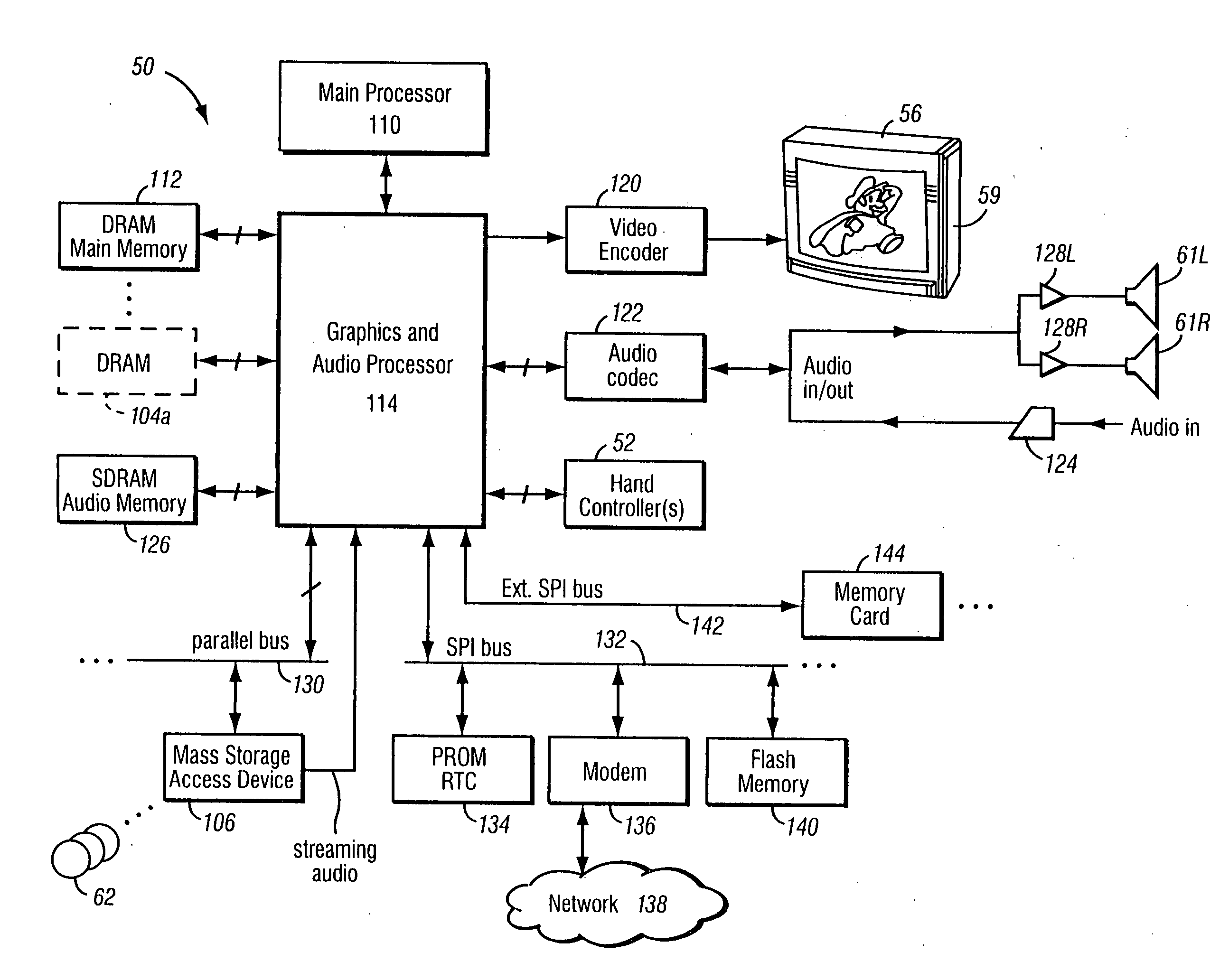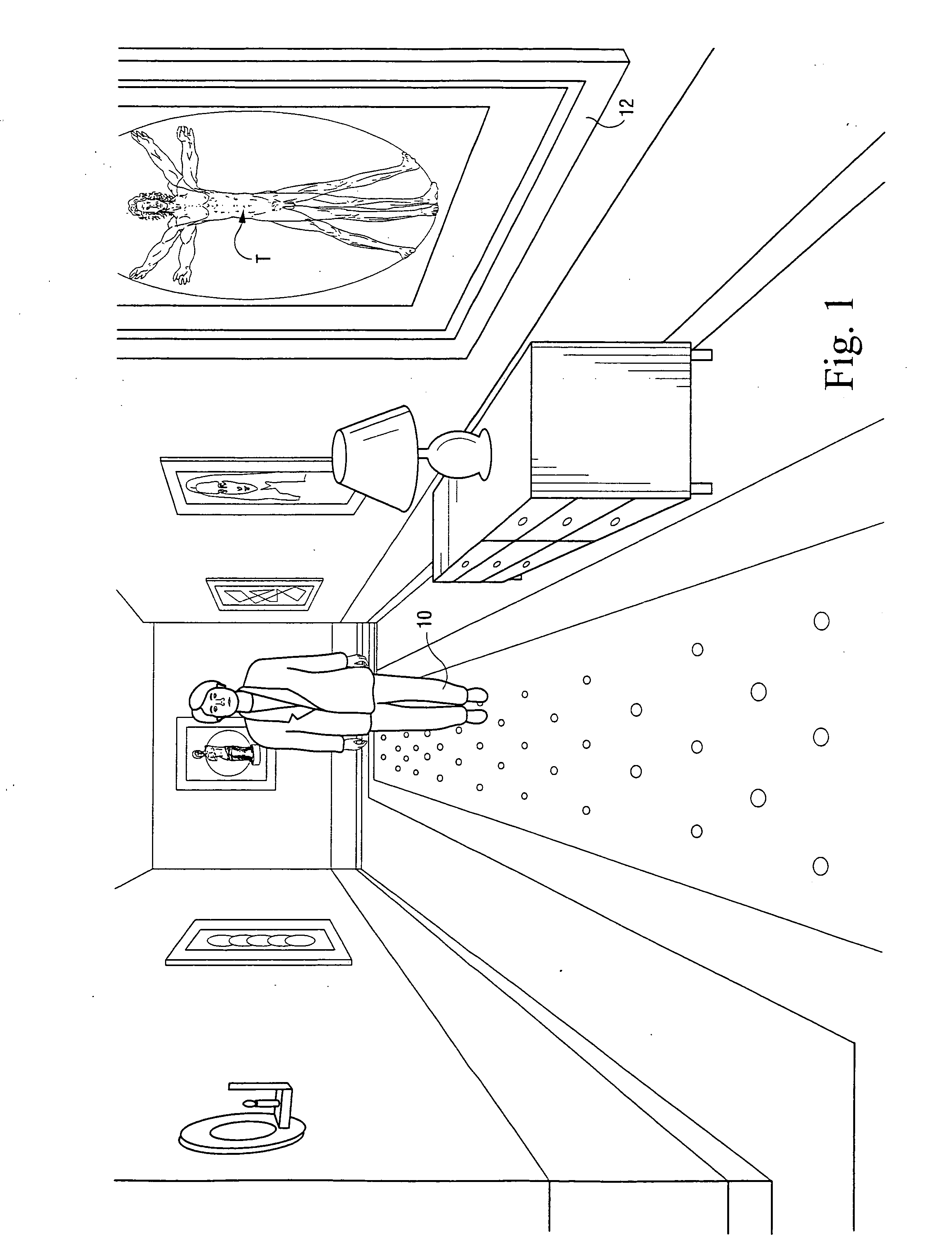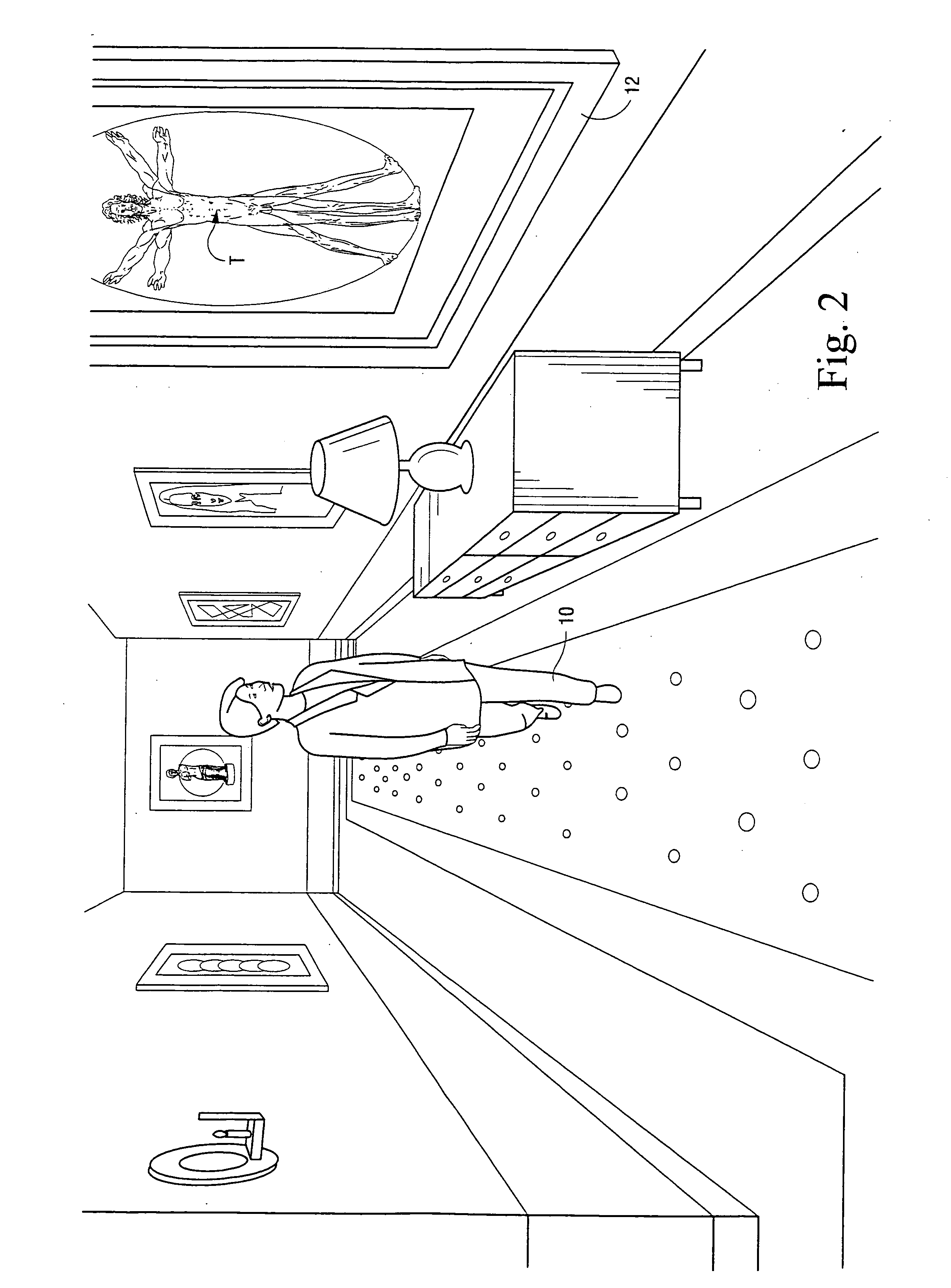System and method for controlling animation by tagging objects within a game environment
a game environment and tag technology, applied in the field of computer graphics, can solve the problems of complex computer graphics generation, inability to interact with the computer doing the graphics generation, and limited computer-generated three-dimensional graphics a few years ago, so as to enhance the visual effect of the display and predict the effect of animation
- Summary
- Abstract
- Description
- Claims
- Application Information
AI Technical Summary
Benefits of technology
Problems solved by technology
Method used
Image
Examples
Embodiment Construction
[0022]FIGS. 1-5 show example screen effects provided by a preferred exemplary embodiment of this invention. These Figures show an animated character 10 moving through an illustrative video game environment such as a corridor of a large house or castle. Hanging on the wall 11 of the corridor is a 3D object 12 representing a painting. This object 12 is “tagged” electronically to indicate that character 10 should pay attention to it when the character is within a certain range of the painting. As the character 10 moves down the corridor (e.g., in response to user manipulation of a joystick or other interactive input device) (see FIG. 1) and into proximity to tagged object 12, the character's animation is dynamically adapted so that the character appears to be paying attention to the tagged object by, for example, facing the tagged object 12 (see FIG. 2). In the example embodiment, the character 10 continues to face and pay attention to the tagged object 10 while it remains in proximity...
PUM
 Login to View More
Login to View More Abstract
Description
Claims
Application Information
 Login to View More
Login to View More - R&D
- Intellectual Property
- Life Sciences
- Materials
- Tech Scout
- Unparalleled Data Quality
- Higher Quality Content
- 60% Fewer Hallucinations
Browse by: Latest US Patents, China's latest patents, Technical Efficacy Thesaurus, Application Domain, Technology Topic, Popular Technical Reports.
© 2025 PatSnap. All rights reserved.Legal|Privacy policy|Modern Slavery Act Transparency Statement|Sitemap|About US| Contact US: help@patsnap.com



